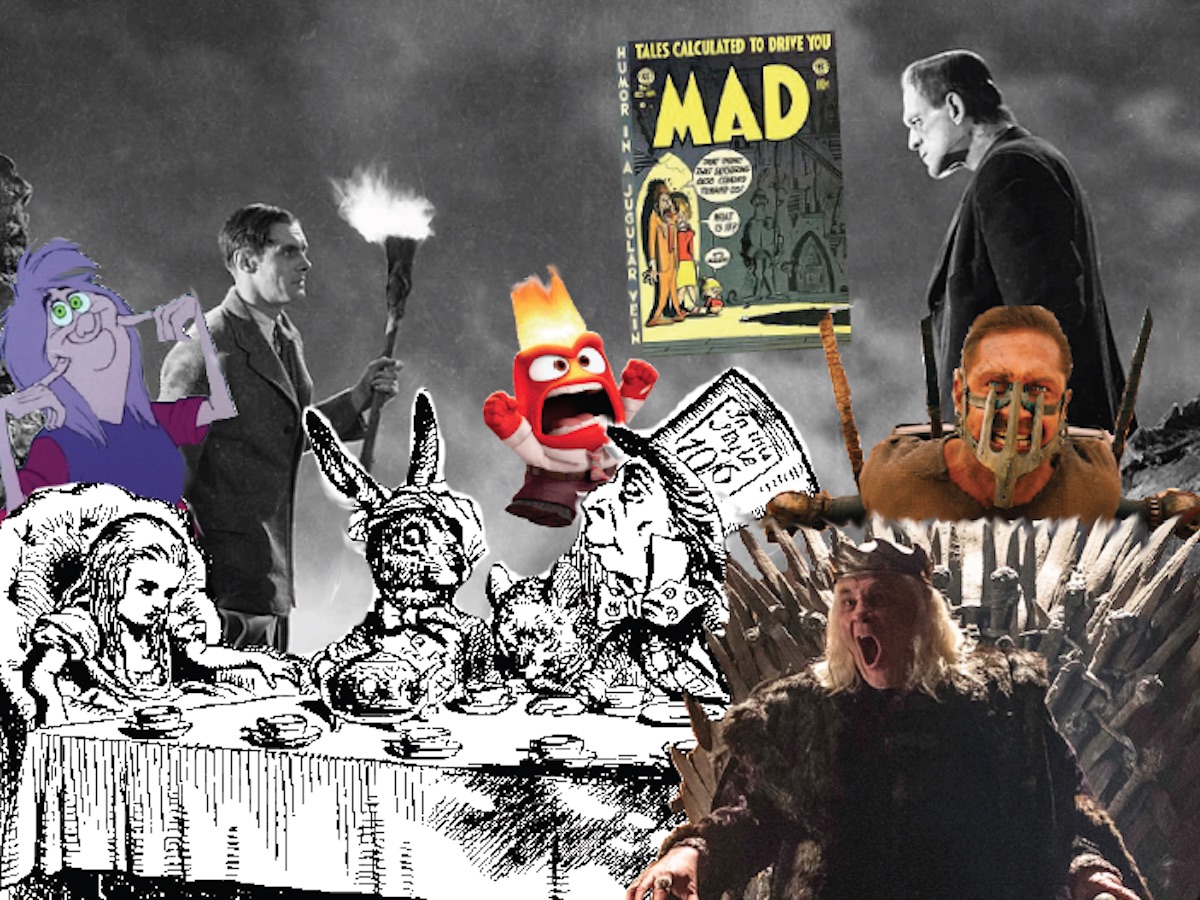It’s March! Are you ready for March Madness?
No, not the basketball brackets, but the spring fever kind of madness. Are you getting a little antsy for springtime? Are you mad about summer? Are you angry at winter hanging on?
In pop culture, there are plenty of “mad” characters who stand out, steal the show, and are hard to forget. As we slide into March, I found ten random and geeky facts about “mad” titles and characters in pop culture.
Since it is the Year of the Rabbit, we’ll start with the obvious.
1. Alice in Wonderland author Lewis Carroll did not invent the phrase “mad as a March hare,” as it is based on an old British expression. One origin is hares tend to get a little aggressive and wild during the breeding season, which begins in the spring.
2. One of the earliest written instances of the mad March hare goes all the way back to the 1500s in a poem called “Blowbol’s Test”: “Thanne [th]ey begyn to swere and to stare, And be as braynles as a Marshe hare.”
This might also possibly be one of the origins of the concept of a “harebrained” action that is rash and not thought out.
3. The March Hare is hardly the only “mad” Wonderland resident, as the Mad Hatter is one of the most famous characters in literature. However, Carroll never used the title “Mad Hatter” in either Alice’s Adventures in Wonderland or its follow-up Through the Looking Glass. He’s called Hatter or Hatta; the reader and years of pop culture lore have filled in the rest.
4. We know why “March hares” are mad, but the phrase “mad as a hatter” has been around long before Wonderland. It was often used to talk about “eccentric” people in the 18th and 19th centuries. Actual hatters, who were often exposed to the effects of Mercury used in making felt hats, sometimes suffered “hatters’ shakes.” This made their speech a little slurred, with some memory loss and tremors.
5. Thirteen years after Disney released Alice in Wonderland, another “mad” character, Mad Madam Mim, was found in 1963’s The Sword and the Stone based on the first part of T.H. White’s The Once and Future King. The wizard duel between Merlin and the powerful and sadistic Mim was actually part of the original novel, but it was taken out later for shortened collections of White’s stories. If you are lucky enough to find an old circa 1938 copy of the novel, Mim comes into play briefly in chapter 6. She imprisons (and plans to eat) Kay and Wart, but later dies in a duel against Merlin.
6. In the movie world, where would post-apocalyptic action fantasy be without the Mad Max series? The series has evolved and grown in budget and popularity since the first Mad Max hit in 1979. Today, the effects and money backing the films are huge, but when the first one was being made, director George Miller had $350,000 to work with. He helped fund the movie by working weekends in his “day job” as an emergency room doctor. Mad Max’s real name, Max Rockatansky, is even named after a doctor, Carl von Rokitansky, who developed the procedure of removing organs during an autopsy.
For those wondering why only the “mad” survive not in the Road Warrior world, which is set in the far-flung future of 2022 in the first film, here’s a quick refresher:
7. Of course, “mad” characters aren’t always eccentric. They can also be just plain angry, like the character Anger in Pixar’s Inside/Out. The character’s shapes for the emotions of a young girl named Riley were very specific to the emotion (like Joy representing a bright “star” and Fear a nerve ending). Anger, with his “hot” temper, was a little red fire brick.
8. One of the most popular tropes in horror and mystery today is that of the “mad scientist,” and no one has been rewritten, redeveloped, and portrayed more than Victor Frankenstein, the title character from the gothic classic Mary Shelly started writing when she was only 18. She possibly got the idea for the character when she visited the German town of Gernsheim, where she learned of an alchemist named Johann Conrad Dippel who did several “mad” experiments trying to bring life from death.
9. Everyone who followed the HBO adaptation of George R. R. Martin’s Game of Thrones knows Daenerys Targaryen well, and is now getting to know the Targaryen history more in the prequel, House of The Dragon. Yet, don’t forget Daenerys’s father was known famously as the “Mad King” in Westeros, Aerys II Targaryen. He was a cruel, tyrannical leader who was so “mad” by the end of the realm he was killed by Jaime Lannister. Fans of the story know the Lannister history after that.
Yet, everything in Martin’s lore is more complicated than it looks. Here’s a little more about Aerys II:
10. MAD Magazine, the long-running comic that makes fun of everything from politics to entertainment to advertising to other comics, was not named by founder, Maxwell Gaines. Originally part of the horror and crime publishing group, EC Comics, the humor comics were often casually referred to as “EC’s mad mags,” and writer Harvey Kurtzman simply shortened the phrase. Soon MAD Magazine became the unofficial/official title. The first issue in 1952 was even titled “Tales Calculated to Drive You Mad.” As for the name of its mascot, Alfred E. Newman, well, that’s a whole other story.
So, enjoy the frivolity and madness of March and spring, pull up a chair, and have some tea. We’re all mad here.


